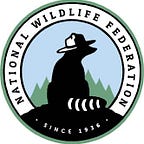It Wasn’t Love At First Sight
Discovering the Magic of the Sagebrush Sea
Westerners who live, recreate and make their living in Sagebrush Country want to save the greater sage-grouse, a bird that once numbered in the millions, and want to save the sagebrush steppe. The steppe, which is habitat for sage-grouse and more than 350 species, has been reduced in size and degraded by urbanization, wildfires, invasive species, energy development, overgrazing. There are fewer than a half million sage-grouse across 11 Western states.
Communities, ranchers, state and local agencies and nonprofits have teamed up to conserve sage-grouse and the habitat that’s also home to mule deer, elk and pronghorn. Their work and conservation plans the U.S. Forest Service and the Bureau of Land Management wrote with input from states and locals led the U.S. Fish and Wildlife Service to decide that sage-grouse didn’t need to be placed on the endangered species list.
A year after that decision, it’s time to put the plans in action and rebuild the population of a signature Western species. Leading up to Sept. 22, the one-year anniversary of Fish and Wildlife’s announcement, the National Wildlife Federation is daily showcasing Westerners who care about the greater sage-grouse and its habitat. They want the political wrangling over the conservation plans to stop so we can get on with saving the bird and the herds.
These are some of the “Voices of the Sage.”
When it comes to the sagebrush steppe, it was not love at first sight for Janet Marschner. She wasn’t around a lot of sagebrush growing up in her native North Dakota, and when she visited Wyoming, she spent most of her time in the mountains.
But for Marschner, who now lives in Cheyenne, familiarity with sagebrush lands has bred respect and awe. After taking a hunter’s education course in 2011, she started hunting and spending more time in the Wyoming landscapes and there she discovered the breadth and diversity of the “sagebrush sea.”
“I spend most of my time in the sage in Wyoming, just thinking about what an amazing ecosystem it is and how many animals live there,” Marschner says.
More than 350 animal and plant species are dependent on sagebrush habitat for food, shelter and nesting. Proof of its importance was driven home for Marschner when she happened upon a doe pronghorn and two fawns, one of which hid under a big sage plant while the other stayed close to its mother.
“If it weren’t for that sage brush, these animals may not survive. That’s why we need to take care of it, respect it, and see the beauty in it. I think most people probably dismiss it too quickly.”
Last fall’s announcement of state and federal plans to conserve sage-grouse and its habitat was a crucial milestone for a key Western landscape, Marschner adds.
Now, the work must be allowed to proceed.
Next up: A renowned Montana wildlife biologist, writer and sportsman thinks greater sage-grouse can make a comeback — providing people do their bit.
Help us protect Greater Sage-grouse and the sagebrush ecosystem. Sign up for our emails — don’t worry, we only email when it’s really important — and follow Our Public Lands on Facebook, Twitter, and Instagram.
